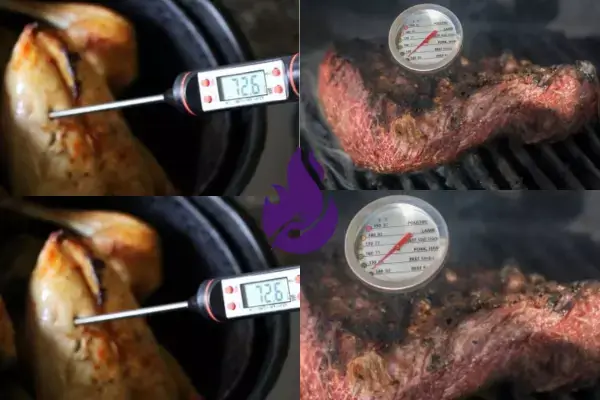Where to Probe a Turkey: A Guide to Perfectly Cooked Poultry
Cooking a turkey can be both an exciting and nerve-wracking experience, especially when it comes to ensuring that it’s cooked to perfection. One of the key elements in achieving that ideal doneness is understanding where to probe a turkey. Trust me, I’ve had my fair share of trial and error in the kitchen, and I’m here to share some insights that will make your turkey-roasting journey a breeze.
When it comes to probing your turkey, the first step is crucial – insert the probe horizontally, from near the neck cavity. This strategic placement allows you to get an accurate reading of the internal temperature without compromising the bird’s aesthetics or overall presentation.

Now, let’s talk about the probe’s depth. You don’t want to go too deep or too shallow. The tip of the probe should be about 1/2 to 1 inch (1.3 to 2.5 cm) from the internal cavity of the bird. This ensures that you’re measuring the temperature at the heart of the turkey without touching the bone, which can skew your readings.
Additional Resources:
Visit our post on the “Best Offset Smoker” for additional details on how to select the best offset smoker for your requirements. It offers insightful commentary and suggestions to support your decision-making. We Also reviewed budget-friendly Offset smokers under 500. Have a read and go for the Best option that fulfills your needs and requirements.
Understanding Temperature Gradients, Thermal Centers, and Your Thermometer’s Probe
To place your probe correctly, it’s essential to understand three key things: temperature gradients, the thermal center, and your thermometer’s probe.
Understanding Temperature Gradients:
The temperature inside a turkey can vary, and it’s not uniform throughout. The breasts and thighs, being different in composition, might cook at different rates. Knowing this, you can strategically place the probe to capture an average temperature, giving you a more accurate representation of the bird’s overall doneness.
Understanding the Thermal Center:
The thermal center of the turkey is essentially the sweet spot where you want your probe to be. It’s the point where the temperature is most representative of the bird’s overall doneness. By targeting this area, you ensure that your turkey is cooked perfectly without any unpleasant surprises.
Understanding Your Thermometer’s Probe:
Different thermometers have different probe lengths and designs. Familiarize yourself with your particular device to make sure you’re inserting it correctly. Some thermometers might have a specific recommended depth, so be sure to check the manufacturer’s instructions.
Digital vs. Analog Meat Thermometer
Choosing between a digital and analog meat thermometer is another decision you’ll face in your turkey-cooking journey. Both have their pros and cons.

Digital Thermometers:
These modern marvels provide quick and precise readings. Some even come with preset temperature alarms, making your job even easier. However, they often require batteries, so make sure you have extras on hand.
Analog Thermometers:
Old-school analog thermometers are reliable and don’t need batteries. They may take a bit longer to stabilize, but once they do, they can give you an accurate reading. Just be patient and give them a few extra seconds.
Cooking Challenges: How to Position the Thermometer Correctly?
One common challenge many home cooks face is figuring out how to position the thermometer correctly. It’s easy to get it wrong, leading to inaccurate readings and potentially undercooked or overcooked turkey.

Ensure that the probe is not touching any bones, as this can throw off the temperature reading. Additionally, make sure it’s not too close to the surface or too deep into the meat. Finding that sweet spot is crucial for an accurate reading.
Conclusion
In conclusion, where to probe a turkey is a critical aspect of achieving that Thanksgiving masterpiece. Insert the probe horizontally near the neck cavity, ensuring the tip is about 1/2 to 1 inch from the internal cavity. Understand temperature gradients, the thermal center, and your thermometer’s probe to make informed decisions.
Whether you opt for a digital or analog thermometer, the key is to position it correctly. Cooking a turkey can present its challenges, but armed with the right knowledge, you’ll be on your way to serving a perfectly cooked bird that will have everyone at the table singing your culinary praises.
